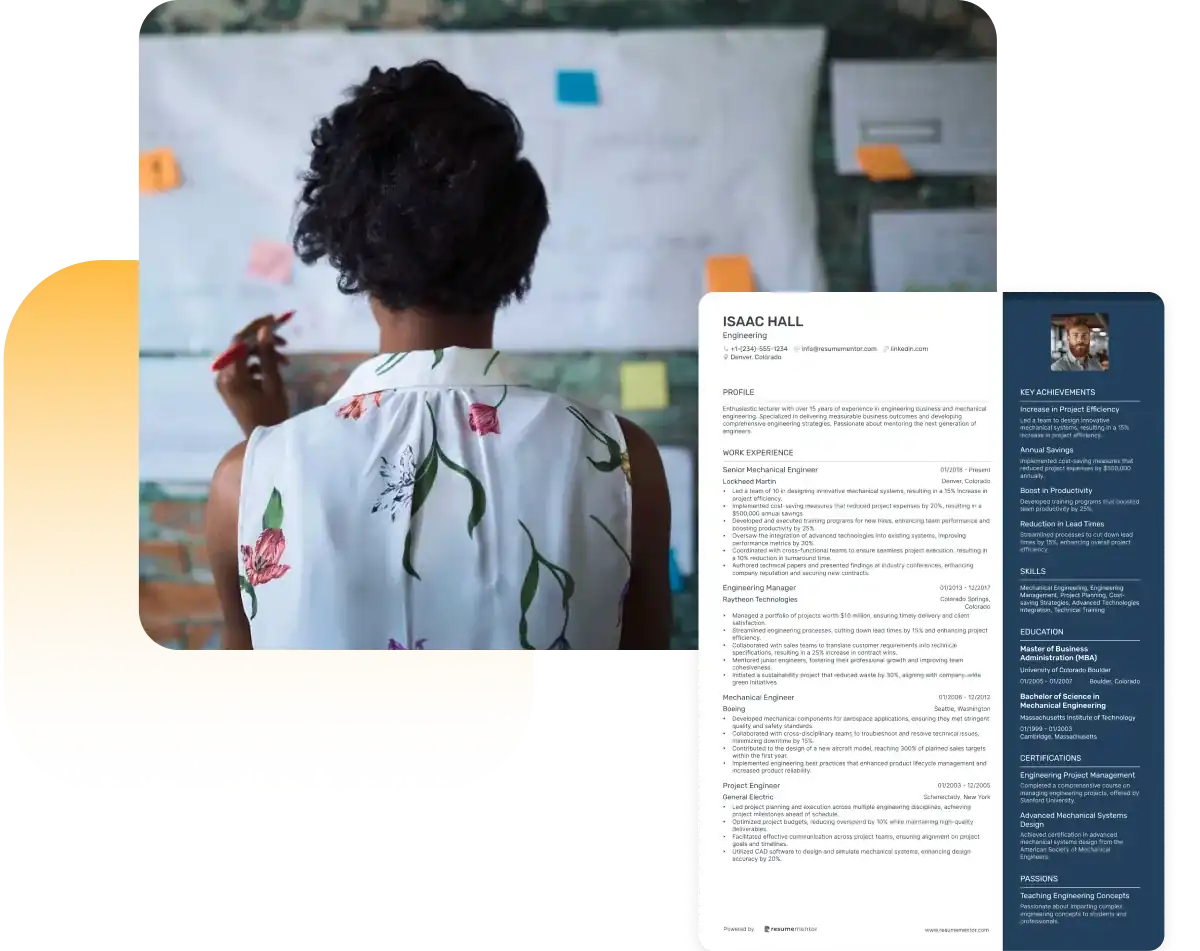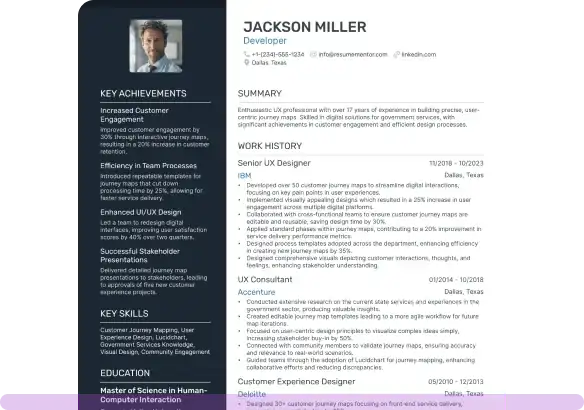How to Write a Career Change Resume Summary That Works

May 20, 2025
|
12 min read
Write a resume summary that connects your past experience to your new career goals.
Changing careers? A well-written resume summary is your best shot at connecting your past experience to your future goals. Whether you're jumping industries or upskilling into a new field, your summary sets the stage for everything else on your resume.
This guide explains how to write a resume summary for a career shift using transferable skills, professional highlights, and tailored content—without straying from honesty or relevance.
Key takeaways
- Your resume summary is your career story in 3–5 sentences.
- Focus on transferable skills, professional experience, and accomplishments.
- Tailor your summary to the job posting using specific keywords.
- Avoid irrelevant personal information and generic phrases.
- Use a clear format that emphasizes impact over chronology.
What is a career change resume summary?
A resume summary is a short intro at the top of your resume that highlights your qualifications, responsibilities, and key strengths. For a career transition, it's your opportunity to:
- Bridge the gap between past and future job roles.
- Emphasize skills over titles.
- Show hiring managers you understand what the new industry needs.
Crafting a career change summary in 5 steps
1. Lead with transferable skills
Don’t focus on your old job title—focus on what you did that applies to the new role.
Example:
“Collaborative team leader with 8+ years in customer-facing roles, now applying communication and problem-solving skills to HR positions.”
2. Tailor your summary to the job posting
Pull specific keywords from the job description: tools, responsibilities, and soft skills.
Example:
“Experienced analyst with strong data analysis and project management skills, eager to apply analytical thinking in digital marketing.”
3. Highlight accomplishments, not daily tasks
Don’t list duties—focus on measurable results and achievements.
Example:
“Reduced onboarding time by 35% by designing an efficient training process, now ready to bring that structure to operations roles.”
4. Use Industry Language
Customize the summary by researching the company and using terms that match its tone and values.
Example:
“Detail-oriented professional with a passion for clean design, excited to bring UX principles to fast-paced SaaS environments.”
5. Mention credentials or career prep
Certifications, courses, and freelance experience count—even unpaid work adds weight.
Example:
“Completed certification in content marketing, building on a background in education to create effective learning experiences online.”
Resume summary examples by career shift
Teacher → Corporate Training
“Dynamic educator with a decade of classroom experience, transitioning into corporate learning and development. Skilled in communication, curriculum design, and driving engagement.”
Retail → Tech Support
“Customer-focused professional with strong problem-solving and collaboration skills. Passionate about technology and currently completing coursework in coding and network troubleshooting.”
Healthcare → Project Management
“Healthcare admin with experience managing data-driven workflows and cross-functional teams. Bringing a detail-oriented mindset and leadership skills to project management roles.”
Dos and don'ts of resume summaries
Do:
- Tailor your summary to each job.
- Use specific keywords from the job posting.
- Highlight accomplishments over responsibilities.
- Mention transferable skills like communication, leadership, or data analysis.
- Research the company to match the tone and priorities.
Don’t:
- Include irrelevant personal information or hobbies.
- Repeat your daily tasks without showing any impact.
- Use overused phrases like “go-getter” or “hard-working.”
- Skip customizing your summary—generic summaries fall flat.
- Lie or exaggerate about your professional experience.
Using keywords to get noticed
When applying for jobs—especially during a career change—keywords are critical. They help your resume pass applicant tracking systems (ATS) and show hiring managers that you understand the role.
Think of keywords as the language of your new industry. If your resume doesn’t speak it, you won’t get called in.
Why keywords matter
- ATS software scans resumes for keywords from the job posting.
- Keywords highlight alignment with the role’s responsibilities and required skills.
- They increase your visibility to both recruiters and automated systems.
Where to find keywords
- Job postings (look for repeated words and required skills)
- Industry blogs or LinkedIn profiles of professionals in your target role
- Company career pages and mission statements
How to use keywords strategically
1. Match action verbs to accomplishments
Use verbs like:
- Led cross-functional teams to complete product launches
- Managed project timelines and stakeholder communications
- Delivered on KPIs through proactive team leadership
2. Highlight leadership and project involvement
If you’ve ever been responsible for outcomes, mention it.
Example:
“Led a team of five to launch a new content calendar strategy, increasing monthly engagement by 30%.”
3. Don’t overstuff—customize naturally
Instead of repeating the word “project” ten times, use it naturally and pair it with real achievements.
Example:
“Managed multiple client-facing projects, aligning deliverables with business goals and timelines.”
4. Tailor your summary for each role
Every job description is slightly different. Adjust your resume summary to reflect the specific keywords used in the job ad, especially those related to:
- Leadership
- Project coordination
- Communication
- Team management
PRO TIP
Use a free ATS checker or keyword analysis tool to test your resume against a job description.
Honesty in resume writing
When changing careers, it’s tempting to stretch the truth. Don’t.
Being truthful about your experience, skills, and qualifications builds trust with employers. Even if you lack direct experience, authenticity can win over hiring managers.
Why honesty matters:
- Background checks can reveal inconsistencies.
- Misrepresenting a job role or degree damages your personal branding.
- Employers value professional integrity and authenticity.
PRO TIP
Frame your career shift around genuine motivations and achievements, not just opportunities.
Listing education experience
Education supports your credibility during a career transition. List all relevant degrees, certifications, and diplomas prominently.
What to include:
- Certifications (e.g., PMP, Google Data Analytics, HubSpot Content Marketing).
- Online courses in new fields (Coursera, edX, etc.).
- Degrees in related areas like business administration or digital marketing.
- Relevant skills in email marketing, branding, or SEO optimization.
Example:
Google UX Design Certificate, Coursera—Completed 2024
Resume formatting options
There’s no single “right” resume format—but there are smart ways to present a career change.
Resume layout tips
- Use a hybrid (combination) format to balance skills and work history.
- Avoid over-the-top designs—choose clean, professional resume layouts.
- Emphasize roles and responsibilities with bullet points.
- Group your work history by relevance, not just chronology.
- Incorporate hard skills and impact statements in each section.
PRO TIP
Use resume templates that highlight your best traits without relying too much on job titles
Showcasing skills on a career change resume
Skills are the cornerstone of a career shift. Emphasize both soft skills and hard skills, especially those tied to your new industry.
Examples of transferable skills:
- Data analysis
- Copyediting and written communication
- Excel and project management tools
- Collaboration and problem-solving
- Openness to feedback
- Coding or technical knowledge (if relevant)
PRO TIP
Group skills under categories like “Technical Skills” and “Leadership & Communication” to increase clarity.
Frequently asked questions
What if I don’t have direct experience in the new field?
Focus on transferable skills, professional highlights, and any relevant certifications or projects that support your shift.
Can I use resume templates for a career change?
Yes. Use templates that emphasize skills, key strengths, and project management over past titles.
Should I include soft skills?
Absolutely. Employers look for soft skills like adaptability, teamwork, and communication just as much as technical knowledge.
How do I choose what to put in the summary?
Tailor your summary to the job posting and include the most relevant accomplishments and skills from your career transitions.
Conclusion
A compelling resume summary helps hiring managers see your potential—even if your background isn’t traditional. Use it to show how your skills, experience, and passion align with your new career goals.
Be honest. Be strategic. And most of all, be clear about what you bring to the table.
Your career change isn't a detour—it's a new direction. And with a great summary, you're well on your way. Use our Resume Builder tool to get started now!
Related Articles

Continue Reading
Check more recommended readings to get the job of your dreams.
Resume
Resources
Tools
© 2025. All rights reserved.
Made with love by people who care.
